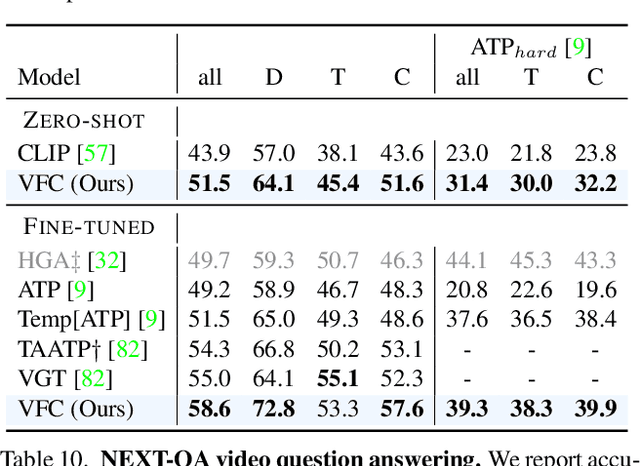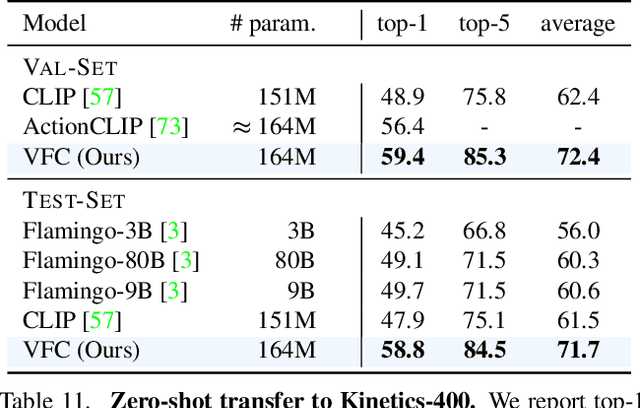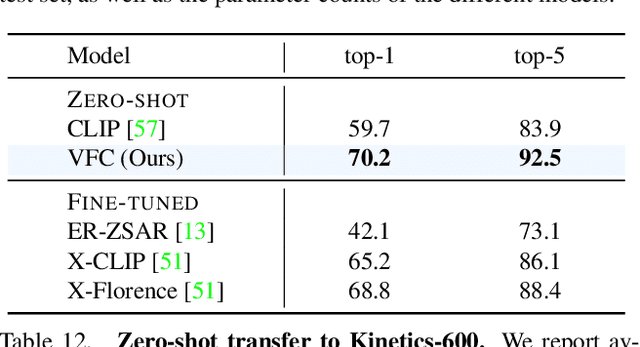Verbs in Action: Improving verb understanding in video-language models
Paper and Code
Apr 13, 2023



Understanding verbs is crucial to modelling how people and objects interact with each other and the environment through space and time. Recently, state-of-the-art video-language models based on CLIP have been shown to have limited verb understanding and to rely extensively on nouns, restricting their performance in real-world video applications that require action and temporal understanding. In this work, we improve verb understanding for CLIP-based video-language models by proposing a new Verb-Focused Contrastive (VFC) framework. This consists of two main components: (1) leveraging pretrained large language models (LLMs) to create hard negatives for cross-modal contrastive learning, together with a calibration strategy to balance the occurrence of concepts in positive and negative pairs; and (2) enforcing a fine-grained, verb phrase alignment loss. Our method achieves state-of-the-art results for zero-shot performance on three downstream tasks that focus on verb understanding: video-text matching, video question-answering and video classification. To the best of our knowledge, this is the first work which proposes a method to alleviate the verb understanding problem, and does not simply highlight it.
 Add to Chrome
Add to Chrome Add to Firefox
Add to Firefox Add to Edge
Add to Edge